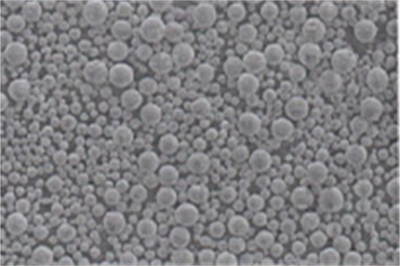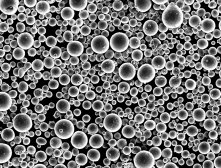Introduction to AlSi10Mg Powder
AlSi10Mg is an aluminum alloy powder widely used in additive manufacturing and 3D printing applications. It offers a great combination of strength, lightweight properties, thermal properties, and corrosion resistance.
Key Features of AlSi10Mg Powder:
- High strength-to-weight ratio
- Good thermal conductivity
- Excellent corrosion resistance
- Ideal for complex geometries
- Compatible with various AM processes
AlSi10Mg powder can be used to print light, strong metal parts across aerospace, automotive, medical, and industrial sectors. Its properties make it suitable for applications like brackets, housings, heat exchangers, manifolds, and more.
This guide provides a technical overview of AlSi10Mg powder to help you understand its composition, characteristics, applications, processing, and suppliers.
Composition and Powder Characteristics
AlSi10Mg belongs to the aluminum-silicon alloy family with magnesium as the primary alloying element. Here are its typical composition ranges:
| Element | Composition Range |
|---|---|
| Aluminum (Al) | Balance |
| Silicon (Si) | 9-11% |
| Magnesium (Mg) | 0.2-0.45% |
| Iron (Fe) | <0.55% |
| Copper (Cu) | <0.05% |
| Manganese (Mn) | <0.45% |
| Other | Each < 0.05% |
| Impurities | <0.15% |
The high silicon content in AlSi10Mg powder increases strength and hardness through precipitation hardening. Magnesium controls dislocation movement to provide strength.
Key characteristics of AlSi10Mg powder:
- Particle shape: Predominantly spherical
- Particle size: 15-45 microns
- Apparent density: ~2.7 g/cc
- Flowability: Excellent
- Sphericity: High
The particle size distribution is optimized for selective laser melting applications. The powders have good flow and high density to support smooth powder bed spreading.

Applications of AlSi10Mg Parts
AlSi10Mg is widely used aerospace, automotive, and industrial sectors due to its high strength-to-weight ratio, thermal properties, and corrosion resistance.
Typical applications include:
| Application | Components |
|---|---|
| Aerospace | Brackets, stringers, ribs, impellers |
| Automotive | Connecting rods, mounts, housings |
| Industrial | Heat exchangers, manifolds, valves, tooling |
| Medical | Orthopedic implants, prosthetics |
| Marine | Propellers, rudders, ballast tanks |
AlSi10Mg enables lightweight structures like brackets and housings to reduce component weight in vehicles. It also allows consolidation of complex parts like manifolds through AM. The material is biocompatible for medical implants.
Specifications and Standards
AlSi10Mg powder and parts must meet compositional and mechanical property specifications per aerospace and industrial standards.
Key standards include:
- ASTM F3055 – Standard Specification for Additive Manufacturing AlSi10Mg with Powder Bed Fusion
- ASTM B26/B26M – Standard Specification for Aluminum-Alloy Sand Castings
- ISO 21404:2019 – Additive manufacturing — General principles — Requirements for purchased AM parts
ASTM F3055 covers composition, processing, tensile properties, and other criteria. Minimum tensile strength is 310 MPa. ISO 21404 specifies requirements for AM part suppliers.
Design Considerations
AlSi10Mg parts are designed following general AM design principles:
- Optimize geometries for weight reduction
- Consolidate assemblies into single parts
- Incorporate conformal cooling channels
- Allow functional integration and part consolidation
Design for additive also involves:
- Minding minimum feature size and wall thickness
- Accounting for residual stresses from rapid melting and solidification
- Incorporating support structures where needed
Thicker sections may require hot isostatic pressing to relieve stresses and avoid cracking. Surface finishing processes like CNC machining can be used for critical fits and dimensions.
Process Parameters
AlSi10Mg parts are most commonly fabricated by selective laser melting (SLM) and electron beam melting (EBM).
Typical SLM process parameters:
- Laser power: 100-400 W
- Scan speed: 100-1000 mm/s
- Layer thickness: 20-100 μm
- Hatch spacing: 50-200 μm
- Build plate temperature: 150-200°C
EBM process parameters:
- Beam power: 1-10 kW
- Beam speed: 10,000-100,000 mm/s
- Layer thickness: 50-200 μm
- Build plate temperature: ~700°C
SLM uses a laser for powder bed fusion while EBM uses an electron beam. SLM produces better surface finish and tolerances while EBM offers higher build rates.
Supports are used to prevent deformation and dissipate residual stresses. Hot isostatic pressing can enhance properties of AlSi10Mg parts from both processes.
Post-Processing
Common post-processing steps for AlSi10Mg parts:
- Stress relieving – Heat treatment to relieve residual stresses
- Support removal – Removing support structures
- Surface finishing – Sanding, grinding, CNC machining
- Heat treatment – Solution heat treatment and aging to enhance strength
Stress relieving is done right after printing before support removal. Solution treatment is done at 530-550°C followed by aging at 160-180°C. Machining achieves dimensional accuracy and surface finish requirements.
Additional processes like:
- Hot isostatic pressing (HIP)
- Plating
- Polishing
- Anodization
can also be performed for enhanced densification, corrosion resistance, or aesthetics.
Material Suppliers
Reputable suppliers of AlSi10Mg powder include:
| Company | Product Name | Description |
|---|---|---|
| LPW Technology | LPW AlSi10Mg | Spherical powder, good flowability |
| Sandvik Osprey | Osprey AlSi10Mg | Optimized particle size distribution |
| Carpenter Additive | AlSi10Mg | Spherical powder for AM |
| GE Additive | LPW AlSi10Mg | Contract manufacturing services |
| Hoganas | Alumec 89 | Pre-alloyed atomized powder |
Besides powder, some companies offer associated AM printing services. Key factors in supplier selection are powder quality, consistency, technical expertise, additional services, and pricing.
AlSi10Mg powder prices range from $50-150/kg based on order quantity, quality, distribution channel etc. High-purity spherical powders with tight control on particle size distribution tend to be more expensive.
Pros and Cons of AlSi10Mg
Advantages of AlSi10Mg:
- High strength-to-weight ratio
- Excellent thermal conductivity
- Good corrosion resistance
- Weldable and machinable
- Biocompatible
Limitations:
- Lower maximum service temperature than aluminum alloys with higher silicon
- Less ductility than pure aluminum
- Susceptible to galvanic corrosion
- Requires heat treatment
AlSi10Mg provides the best balance of properties but is not suitable for high temperature applications above ~250°C. It has lower ductility than other wrought Al alloys. Proper design is needed to account for its coefficient of thermal expansion.
Choosing the Right AlSi10Mg Powder Supplier
Here are key factors to consider when selecting an AlSi10Mg powder supplier:
- Technical expertise in aluminum alloy powders for AM
- Powder quality and consistency from batch to batch
- Particle size distribution optimized for AM process
- Powder morphology – high sphericity and flowability
- Quality assurance – sampling, testing, and certification
- Reputable clients/case studies – aerospace, medical, industrial
- Value-added services -consulting, R&D, contract manufacturing
- Delivery and support – lead times, shipping, customer service
- Pricing – quoted price vs. value
Work with a supplier focused on AM powders with stringent quality control and metal powder expertise. Leverage their technical knowledge and choose one offering end-to-end solutions versus just selling powder.
AlSi10Mg Powder for Metal AM: The Takeaways
- AlSi10Mg powder enables lightweight, high strength parts via AM
- Excellent strength-to-weight ratio and thermal properties
- Used extensively aerospace, automotive, and industrial applications
- SLM and EBM are the common printing methods
- Choosing a reputable supplier is key for powder quality
- AlSi10Mg provides a balanced blend of mechanical properties, weldability, and corrosion resistance
AlSi10Mg is a versatile aluminum alloy for AM with properties between pure Al and Al-Si casting alloys. With proper parameter optimization and post-processing, AlSi10Mg powder provides a path to push the limits in terms of part complexity and performance via metal additive manufacturing.

FAQs
Q: What is the typical chemical composition of AlSi10Mg powder?
A: The typical composition is 89-91% aluminum, 9-11% silicon, 0.2-0.45% magnesium, and less than 0.55% iron. Other alloying elements are restricted to trace amounts.
Q: Does AlSi10Mg require heat treatment?
A: Yes, AlSi10Mg parts typically require stress relieving followed by solution heat treatment at 530-550°C and aging at 160-180°C to achieve optimal strength.
Q: What are some applications of AlSi10Mg?
A: Common applications are aerospace brackets and housings, automotive mounts, heat exchangers, and medical implants leveraging its high strength, thermal conductivity, and biocompatibility.
Q: What printing methods work for AlSi10Mg?
A: Selective laser melting (SLM) and electron beam melting (EBM) are the two primary powder bed fusion methods used for AlSi10Mg.
Q: What causes porosity issues in AlSi10Mg parts?
A: Key porosity causes are improper SLM/EBM parameters, poor powder quality and spreadability, and lack of process optimization. Hot isostatic pressing is often used to reduce porosity.
Q: Why is high powder sphericity important for AlSi10Mg?
A: High sphericity improves powder flowability and packing density. This allows smooth powder spreading and uniform melting, resulting in high density parts with good mechanical properties.
Q: How much does AlSi10Mg powder cost?
A: AlSi10Mg powder costs between $50-150 per kg based on quality, lot size, supplier margins, and geographical region. High sphericity and controlled particle size distribution increase cost.





